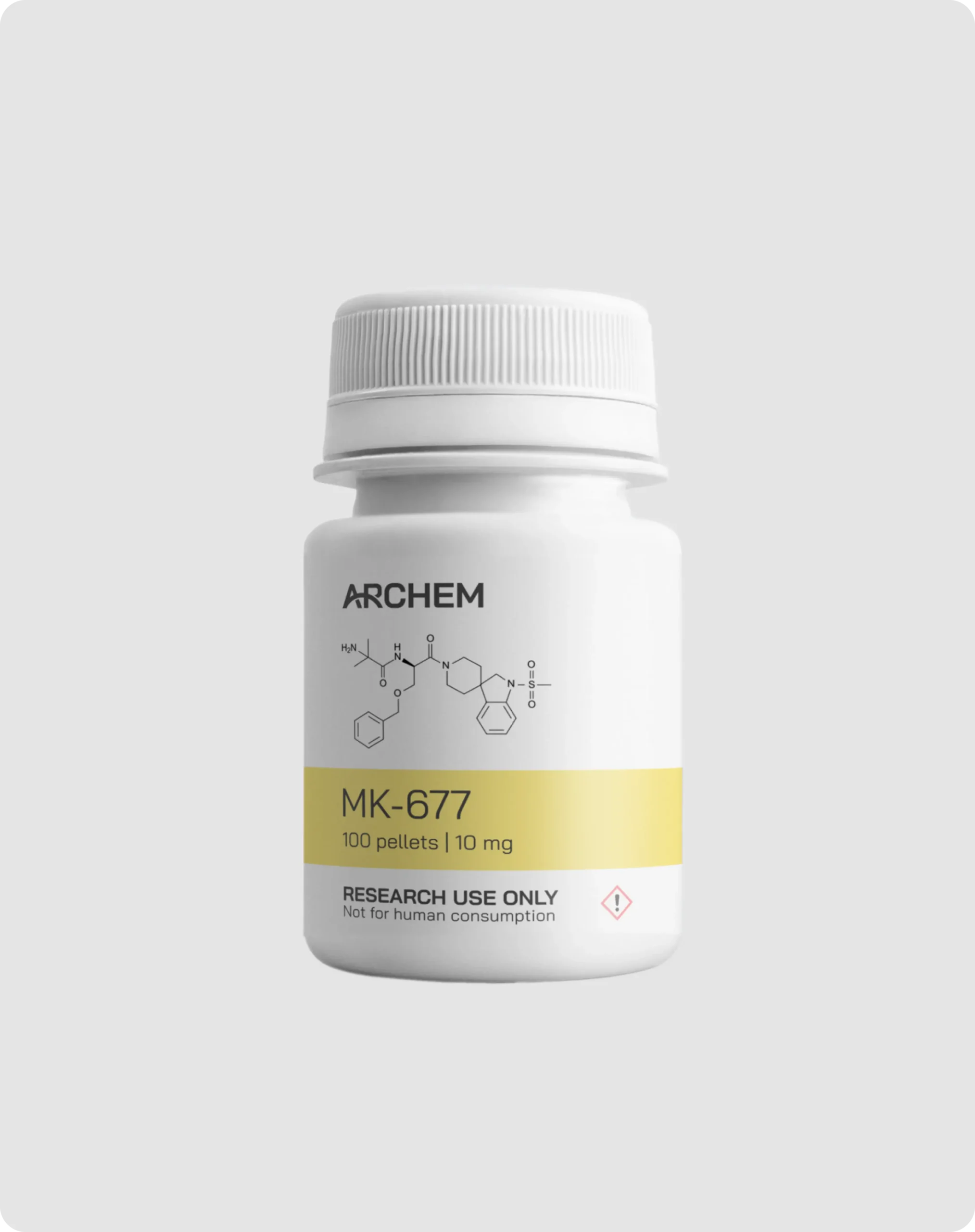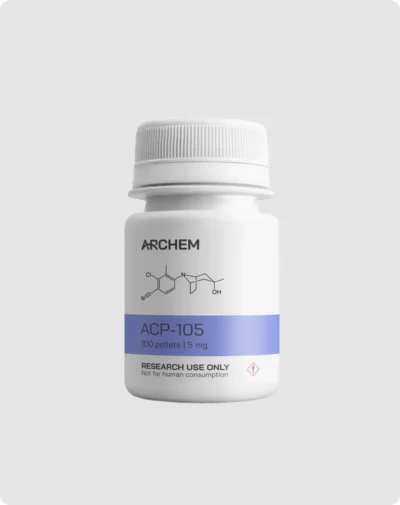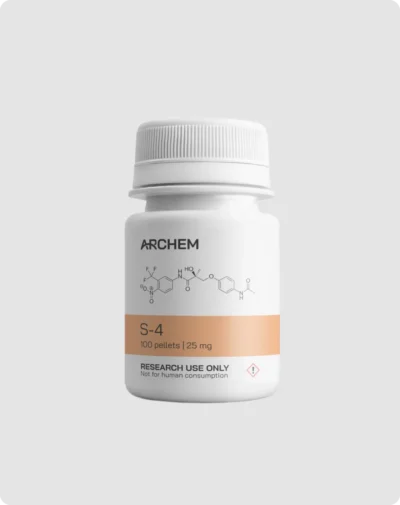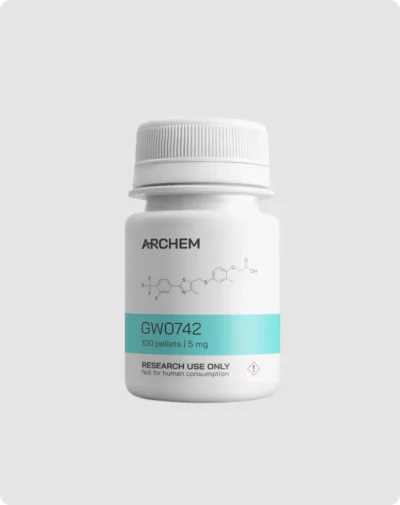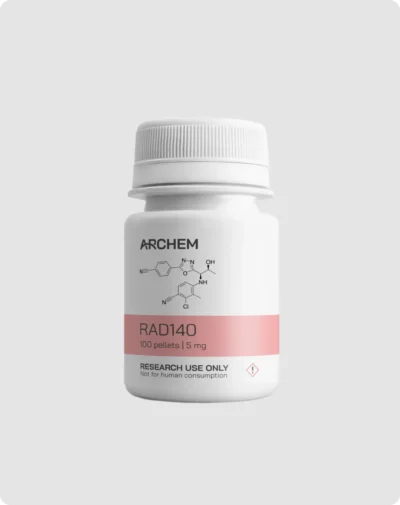Description
⚠️Material Safety Data Sheet : Here
MK677 UK Pellets (Ibutamoren Mesylate)
MK-677, also known as Ibutamoren Mesylate, is a potent, orally active growth hormone secretagogue that mimics the action of ghrelin. It stimulates the release of growth hormone (GH) and increases insulin-like growth factor 1 (IGF-1) levels without affecting cortisol levels. This compound is widely utilized in research settings to explore its potential therapeutic applications in conditions such as growth hormone deficiency, muscle wasting, and osteoporosis.
Important links to help you
Product Features and Specifications
- Chemical Formula: C27H36N4O5S.CH4O3S
- Molecular Weight: 624.77 g/mol
- Form: White to off-white pellets, ensuring controlled release and stability.
- Purity: ≥99% as determined by HPLC analysis.
- Solubility: Soluble in DMSO, ethanol, and other organic solvents.
- Storage Conditions: Store at -20°C in a dry, light-protected environment to maintain stability.
Applications
MK-677 Pellets are suitable for various research areas, including:
- Growth Hormone Deficiency: Investigating potential therapeutic effects on GH release and IGF-1 levels.
- Muscle Wasting Disorders: Studying the impact on muscle mass and strength.
- Osteoporosis Research: Exploring effects on bone density and turnover.
- Metabolic Studies: Assessing influence on body composition and metabolism.
Research Insights
MK-677 has been extensively studied, with several key findings:
- Growth Hormone Secretion: MK-677 has been shown to sustain activation of the GH–IGF-1 axis, increasing growth hormone secretion by up to 97%.
- Lean Body Mass: Studies indicate that MK-677 increases lean body mass with no change in total fat mass or visceral fat.
- Bone Mineral Density: Research suggests that MK-677 increases bone mineral density, making it a promising potential therapy for the treatment of frailty in the elderly.
- Muscle Mass in Older Adults: MK-677 has been found to increase muscle mass in the arms and legs of older adults, indicating its potential as an anti-frailty agent.
These findings highlight MK-677’s potential in various therapeutic areas, making it a valuable tool for scientific research.
Chemist’s view
MK-677, chemically known as Ibutamoren Mesylate, is a groundbreaking compound in the class of growth hormone secretagogues. From a chemist’s perspective, its structural design and mode of action offer significant insights into the manipulation of endocrine pathways for therapeutic and research applications. As a non-peptidic agonist of the ghrelin receptor (GHSR1a), MK-677 distinguishes itself by its ability to promote the secretion of growth hormone (GH) and insulin-like growth factor-1 (IGF-1) without disrupting cortisol homeostasis, a frequent limitation in similar compounds.
Structurally, MK-677 exhibits high receptor-binding specificity due to its finely tuned hydrophobic and polar functional groups. Its mesylate salt form further enhances its solubility and bioavailability, making it an ideal candidate for oral administration and controlled-release formats such as pellets. This structural optimization ensures a sustained activation of the GH–IGF-1 axis, with measurable effects on both anabolic and metabolic processes over extended periods.
A notable characteristic of MK-677 is its long half-life, approximately 24 hours, which simplifies dosing regimens in research studies. This pharmacokinetic profile reduces the variability often seen with peptide-based secretagogues, as MK-677 resists degradation in the gastrointestinal tract and systemic circulation. Its oral bioavailability and receptor-targeting precision minimize off-target interactions, a critical factor when investigating its therapeutic potential.
In the laboratory, MK-677 is indispensable for exploring the interplay between growth hormone regulation and physiological outcomes such as muscle hypertrophy, enhanced bone density, and fat metabolism. Preclinical studies reveal its ability to increase lean body mass and improve bone mineral density by upregulating osteoblast activity and reducing bone resorption rates. These findings align with its potential applications in addressing conditions such as frailty, sarcopenia, and osteoporosis.
Handling and Safety
- Intended Use: For research purposes only. Not for human or veterinary use.
- Safety Precautions: Handle with appropriate laboratory safety protocols. Use personal protective equipment to prevent accidental exposure.
- Documentation: Material Safety Data Sheet (MSDS) available upon request for detailed safety and handling guidelines.
Packaging Options
- Available in 5 mg, 10 mg, and 50 mg pellet formulations.
- Custom packaging and bulk quantities are available upon request to meet specific research needs.
Technical Support
Our team offers comprehensive technical assistance for the application and handling of MK-677 Pellets. Contact us for protocol optimization, analytical support, and troubleshooting to ensure successful research outcomes.

